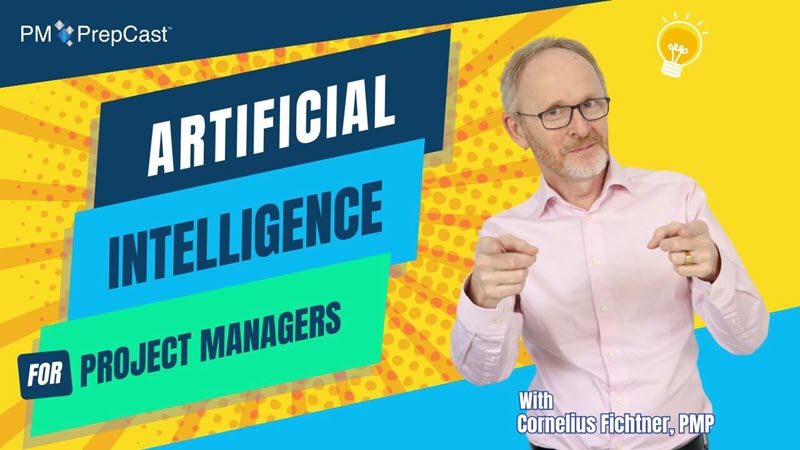Episode 452: Get Your Project Team Moving in the Right Direction and Loving it (Premium)
This episode is reserved for subscribers of the Premium Podcast.
Click here and learn about the Premium Podcast to access this interview and transcript...

In the previous episode, Andrew Kallman gave us an introduction to the concept of Flow from the book that he and his brother wrote.
And today, we are going to open up the book - which is called Flow: Get Everyone Moving in the Right Direction...And Loving It - and we are going to look at chapter two more closely. This chapter discusses "Vision" and how that relates to the flow concept.
Some of the topics you'll hear about are prioritization, aha moments, leadership, how flow can be used in scaling of Agile, the importance of trust in the process, and of course, there is always my favorite question at the end of the interview: How can we apply all of this on our projects today?
Project Management Professional (PMP)® exam training on your phone with The PM PrepCast:

Episode Transcript
Below are the first few pages of the transcript. The complete transcript is available to Premium subscribers only.
Podcast Introduction
Andrew Kallman: In this episode of The Project Management Podcast™, we discuss vision, which is one of the key elements of Flow. It is essential to link everything that we do everywhere in the organization to vision if we want to succeed.
Podcast Introduction
Cornelius Fichtner: Hello and welcome back to The Project Management Podcast™ at www.pm-podcast.com. This is Premium Episode 452, and I'm Cornelius Fichtner.
Premium means that this episode is reserved for you, our premium subscribers. Thank you for being here and thank you for your support.
In the previous episode, Andrew Kallman gave us an introduction to the concept of Flow from the book that he and his brother wrote. And today we are going to open up the book, which has a reminder is called “Flow, Get Everyone Moving in the Right Direction and Loving It.”
We are going to look at chapter two of the book more closely. This chapter discusses vision and how that relates to the Flow concept. Some of the topics you'll hear about are prioritization, a-ha moments, leadership, how Flow can be used in scaling of Agile, the importance of trust in the process, and of course, there is always my favorite question at the end of the interview: How can we apply all of this on our projects today?
Enjoy the interview.
Podcast
Cornelius Fichtner: Hello, Andrew and welcome back to The Podcast!
Andrew Kallman: Hi, Cornelius! Thanks! It’s great to be here again.
Cornelius Fichtner: So as a quick refresher, before we get into the topic of vision here today, maybe for those who haven't yet listened to our previous interview, the introduction to Flow: What is Flow in a few words?
Andrew Kallman: Flow is the optimal state of high performance. That's how we define Flow in the end of our book, Flow, in chapter nine.
Cornelius Fichtner: Alright! Can you then give us an example and explain how to use vision in order to call us a project team and get to that optimal state that you have just described?
Andrew Kallman: That’s a great question. I can do that. We have many examples of how we do that, but one that comes to mind that's really powerful is one of the customers that we trained in Flow, the two directors. So, we trained the C level and the directors. Two of the directors were having a very passionate disagreement, discussion over an issue in the company. And we had just gone through in the training, first, we took the company vision and then we broke it out into departmental visions. And the one director was from Finance and the other director was from Delivery. And as they were talking, the woman that was the director for the one group, she looked at the other director and she said: “Well, wait a second. We just worked on vision in these workshops yesterday. What's your vision?” And so, he said his vision out loud, and she said her vision out loud. And then they looked at each other and they said: “Well, in the end, it's all for the benefit of our end users and customers.
And so they were able to take a step back and be able to resolve a conflict. And it was a pretty heated conflict and, and they were very passionate in their discussions, but they were able to solve it when they stepped back and said: ‘Well, hey, wait a second. Let's, let's go back to starting points of vision, how are our vision similar, and where is that meeting point that we can quickly resolve this issue.’ And so they were able to resolve it and move forward. And it was really powerful. For any team I would be looking at, you want to keep your vision big and visible for your team so that when they walk into the project room or to their desks, or however you're set up, that they see the vision every day.
Cornelius Fichtner: So, you're literally suggesting print it out on a huge piece of paper and, or you know, a flip chart and put it there?
Andrew Kallman: Oh, absolutely. In fact, we, in many cases, will handwrite it if we have those big flip charts that are sticky notes, we'll take one of those and write it on that. Or we'll use some of those, still they're quite big, but they're stickynotes and we'll put them up above the team board where we're doing all the work. And so, yeah, we physically make it visible whenever possible
Cornelius Fichtner: Now my team, one person is in California. The other one isin Canada. We have two people in the United Kingdom. We have people in the Philippines. It's going to be a bit hard for us to put our vision in the team room on the wall. How do we do this for virtual teams?
Andrew Kallman: For the virtual teams, you can do it by painting word pictures. Are you familiar with the book “Turn the Boat Around?”
Cornelius Fichtner: No, I'm not.
Andrew Kallman: Okay. “Turn the Boat Around” was commander Marquet. He used word pictures for the team because he had a submarine and you couldn't put sticky notes on the wall. And so, he did it. He has a very elegant way of creating the verbal pictures to create and communicate vision down through to the team members.
Now, if, if I had team members in the areas that you just shared, my assumption is that they're probably going to have sticky notes on the wall. I would do a brief exercise with everybody to have them write down the vision word for word and put it up above all of the sticky notes that they have, so that it's up there and that they can see it. And so when they walk into their office virtually wherever they're at, it's still on the wall.
Cornelius Fichtner: And then let's talk a bit about prioritization as well. That's part of the Flow concept as well. What has been the effect on prioritization individually teams and organizationally?
Above are the first few pages of the transcript. The complete transcript is available to Premium subscribers only. Please subscribe to our Premium Podcast to receive a PDF transcript.
- Last updated on .


